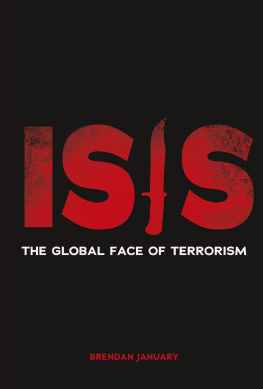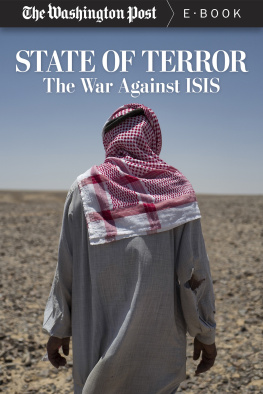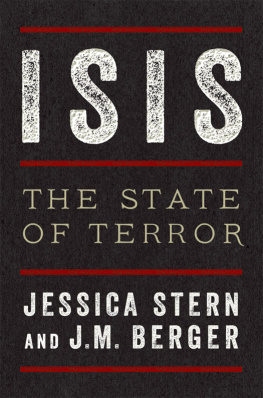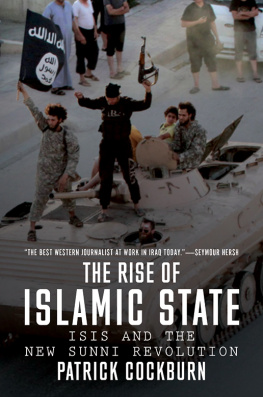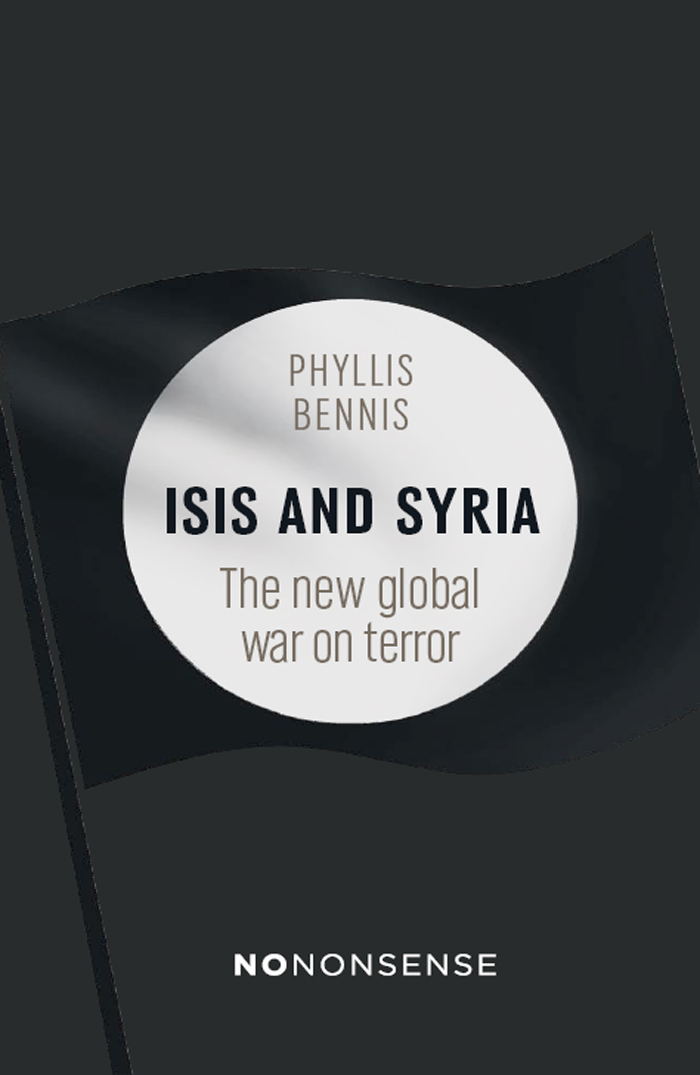
About the author
Phyllis Bennis is a Fellow of the Institute for Policy Studies and of the Transnational Institute in Amsterdam. She writes and speaks widely on US wars and foreign policy and is the author of numerous books, including Inside Israel-Palestine: the conflict explained (New Internationalist). She plays a leading role in US and global movements against wars and occupation.


ISIS and Syria
The new global war on terror
Published in 2017 in Canada by
New Internationalist Publications
2446 Bank Street, Suite 653
Ottawa, Ontario
K1V 1A8
newint.org
and
Between the Lines
401 Richmond Street West, Studio 281
Toronto, Ontario
M5S 2R4
www.btlbooks.com
Published in 2016 in an updated edition by
New Internationalist Publications Ltd
The Old Music Hall
106-108 Cowley Road
Oxford OX4 1JE, UK
First published in North America in 2015 as Understanding ISIS and the New Global War on Terror: A Primer by Interlink Books, 46 Crosby Street, Northampton, MA, 01060-1804, USA.
interlinkbooks.com
Phyllis Bennis
The right of Phyllis Bennis to be identified as the author of this work has been asserted in accordance with the Copyright, Designs and Patents Act 1998.
All rights reserved. No part of this book may be reproduced, stored in a retrieval system or transmitted, in any form or by any means, electronic, electrostatic, magnetic tape, mechanical, photocopying, recording or otherwise, without prior permission in writing of the Publisher.
Cover design: Juha Sorsa
Design concept: Andrew Smith, asmithcompany.co.uk
Series editor: Chris Brazier
Series design: Juha Sorsa
Library and Archives Canada Cataloguing in Publication
Bennis, Phyllis, 1951-, author
ISIS and Syria : the new global war on terror / Phyllis Bennis.
(Nononsense)
Includes bibliographical references and index.
Issued in print and electronic formats.
Co-published by New Internationalist.
ISBN 978-1-77113-317-3 (softcover).--ISBN 978-1-77113-318-0 (EPUB).--ISBN 978-1-77113-319-7 (PDF)
1. IS (Organization). 2. Terrorism--Religious aspects--Islam. 3. Terrorism--Syria. 4. Terrorism--Prevention. I. Title. II. Series: Nononsense (Toronto, Ont.)
HV6433.I722B45 2017 363.325 C2016-907428-5 C2016-907429-3
Table of Contents
Guide
Contents
The rise of Islamic State in Iraq and Syria, or ISIS, and the US war against it have exploded into a regional and global conflagration. Once again, civilians are paying the price for both extremist attacks and US wars.
When ISIS swept across northern Syria and northwestern Iraq in June 2014, occupying cities and towns and imposing its draconian version of Islam on terrified populations, to many around the world it looked like something that had popped up out of nowhere. This was not the case, but the complicated interweaving of players, places, and alliances make understanding ISIS seem almost impossible. Yet ISIS has a traceable past, a history and a political trajectory grounded in movements, organizations, governments, and political moments that form a long story in the Middle East: from Saudi Arabia to al-Qaeda, from the US invasion and occupation of Iraq to the Arab Spring, regime change in Libya and the chaos of Syrias civil war.
The US war against ISIS, President Obamas iteration of George Bushs much-heralded and long-failed global war on terror, presents us with an equally complex set of paradoxes and contradictions. The US is fighting against ISIS alongside Iran and the Iranian-backed Baghdad government in Iraq, and fighting in Syria against ISIS alongside (sort of) the Iranian-backed and US-opposed government in Damascus. And all the while, the US and its Arab Gulf allies are arming and paying a host of largely unaccountable, predominantly Sunni militias that are fighting against the Syrian government and fighting sort of against ISIS. Meanwhile, in Iraq, the Iranian government is arming and training a host of largely unaccountable, predominantly Shia militias that are fighting against ISIS and sort of alongside the US-backed Iraqi government.
Its a mess.
Thats why this book came to be written. Its designed to help readers sort out the history and the players, identify whos doing what to whom, whos on what side, and most of all, figure out what we can do to help stop the killing. Thats why the last questions in the book are perhaps the most important what would alternative policies toward ISIS, toward the region, toward war and peace, actually look like? What can we all do to bring those alternative approaches into the light of day?
For more than a century, US policy in the Middle East has been rooted largely in maintaining access to and control of oil. For roughly three-quarters of a century, in addition to its oil agenda, US policy has had a Cold War-driven strategic interest in stability and US bases to challenge competitors and project power. And, for almost half a century, US policy has been built on a triple play of oil plus stability plus Israel.
While each component of this triplet played the dominant role at different times, overall US interests in the region remained constant. But some changes are under way. Oil is still important to the global economy, but as the threat posed by oils role in global warming becomes better understood and sustainable alternatives continue to emerge, it is less of a factor than it once was. And where it comes from is changing too. The US is producing and exporting more oil than ever, and while the Middle East is still a huge exporter of oil, Africa surpassed the Middle East as a source of US oil imports in 2010.
The US continues to pay more than $3.1 billion every year of taxpayer money to the Israeli military, and continues to provide absolute protection to Israel in the United Nations and elsewhere, assuring that no Israeli officials are held accountable for potential war crimes or human rights violations. But with rising tensions between Washington and Tel Aviv over settlement expansion and especially over Israels efforts to undermine Washingtons negotiations with Iran, President Obama in 2015 for the first time hinted at a shift, indicating that the US might reconsider its grant of absolute impunity to Israel. With public opinion shifting dramatically away from the assumption that Israel can do no wrong, and influential, increasingly mainstream campaigns pushing policymakers in that direction, a real shift in US policy may be on its way. Were not there yet, but change is coming.
That leaves strategic stability, military bases and ability to project power read: send troops and bombers as the most important national interest driving US policy in the Middle East. This means that the war on terror, the seemingly permanent US response to instability in the region, is strategically more important and far more dangerous than ever.
That war is rooted in the aftermath of the September 11, 2001 attacks the US invasion of Afghanistan, and especially the 2003 invasion and occupation of Iraq. Twelve years after the invasion of Iraq, several groups of physicians attempted to accomplish what the we dont do body counts Pentagon had long refused to do: calculate the human costs of the US war on terror. In Body Count: Casualty Figures After Ten Years of the War on Terror, the Nobel Peace Prize-winning International Physicians for the Prevention of Nuclear War, Physicians for Social Responsibility, and Physicians for Global Survival together reached the staggering conclusion that the war was responsible for the loss of at least 1.3 million lives in Iraq, Afghanistan, and Pakistan from the September 11, 2001 attacks until 2013.



